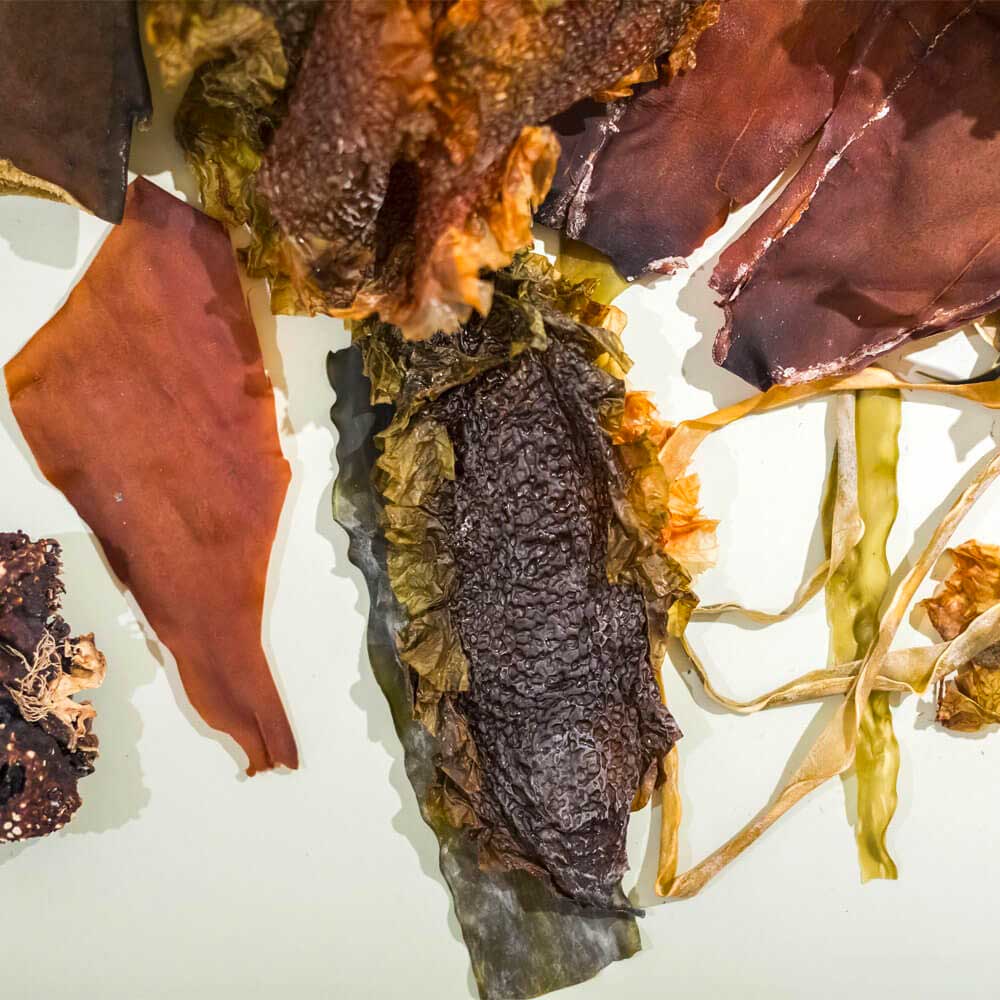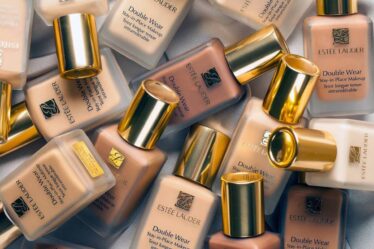
While looking for the best vegan leather alternatives, kelp leather material kept coming up.
According to experts, for a vegan leather alternative to be considered best, it must be:
- From sustainable bio-sources.
- Produced via carbon-neutral techniques.
- As durable, attractive, and versatile as any animal-based leather.
I’ve decided to conduct thorough research on kelp leather, and here are the results:
What Is Kelp Leather?
Kelp leather is a flexible, versatile, and durable leather-like fabric made from ‘kelp’.
Kelp is a brown seaweed species with a long, tough stalk and broad frond.
This seaweed is the fastest-growing organism globally, reaching a daily height of 36 inches.
It outgrows even bamboo – the world’s fastest-growing plant – which only reaches 24 inches daily.
As one of the most renewable organisms on the planet, Kelp absorbs CO2, slowing down global warming and ocean acidification.
Kelp seaweed also absorbs farm run-off, responsible for toxic algae blooms and ecosystem collapse.
Nowadays, there are many vegan materials used instead of animal leather.
However, unlike synthetic and polyurethane-based vegan leather alternatives that are bad for the environment, kelp leather is plant-based, decomposable, and environmentally friendly.

But, unlike bamboo, kelp is harvested from coastal waters so that it doesn’t require fertilizers, pesticides, or other toxic chemicals usually required for land plants.
Kelp grows clean, just as nature intended.
Moreover, kelp absorb large amounts of CO2 from the atmosphere, up to 5x more CO2 than any other land plant.
Other sustainable alternatives similar to kelp leather are mushroom leather and fabrics made from kombucha tea, pineapple foliage, cool stone, tree bark, and even lab cultures of animal cells.
SeaCell Kelp Leather
SeaCell is a branded type of kelp leather developed by the American plant leather supplier Nanonic Inc.
To make SeaCell, the company mixes kelp seaweed with cellulose from other algae fibers (Tencel).
The resulting material looks like leather but it is much softer and more flexible.

The production process starts by embedding dried and crushed seaweed into cellulose fibers using nanotechnology.
According to the company, the resulting material is 100 percent biodegradable and carbon-neutral.
Moreover, the material seems to have extra health benefits.
That is thanks to the vitamin E and other nutrients found in Kelp that are absorbed by the wearer’s skin.
AlgiKnit Kelp Leather
AlgiKnit Inc. is a biomaterials company from New York known for integrating science and design into textile production.
The company reached media popularity when in 2018, it produced seaweed yarns for a compostable Nike sneaker.
Nowadays, the company creates durable and degradable yarns and other environmentally friendly materials from kelp.
Conclusion
Derived from abundantly available, sustainable sources of raw material, this seaweed leather beats animal leather in terms of sustainability.
Except for lab-grown leather, kelp leather is produced via non-toxic processes, and it is fully biodegradable when composted.
At the same time, kelp leather provides the durability consumers expect from leather products such as apparel, shoes, accessories, and even automobile upholstery.
Additionally, kelp leather is far more versatile than traditional leather, as the shape and size of the usable material are not constrained by the animal’s shape and size nor by the quirks and flaws found in each skin.
Finally, kelp leather is cost-competitive, eco-friendly, sustainable, and humane.
As the manufacturing of kelp leather scales up even further, the costs will continue to drop, and the classic animal hides leather may one day become a thing of the past.
Weekly Newsletter
Keep up with the latest in fashion, beauty and style!
Ana Alves is a fashion and beauty writer with a keen interest in sustainability and veganism. Hailing from Sao Paulo, Brazil but living in London, UK, Ana has been writing about sustainable and vegan fashion for over 10 years. Actively curating for Saatchi, Ana’s engaging prices have been presented in Forbes, Wired, Vanity Fair, The London Economic, Digital Trends, and The VOU.



